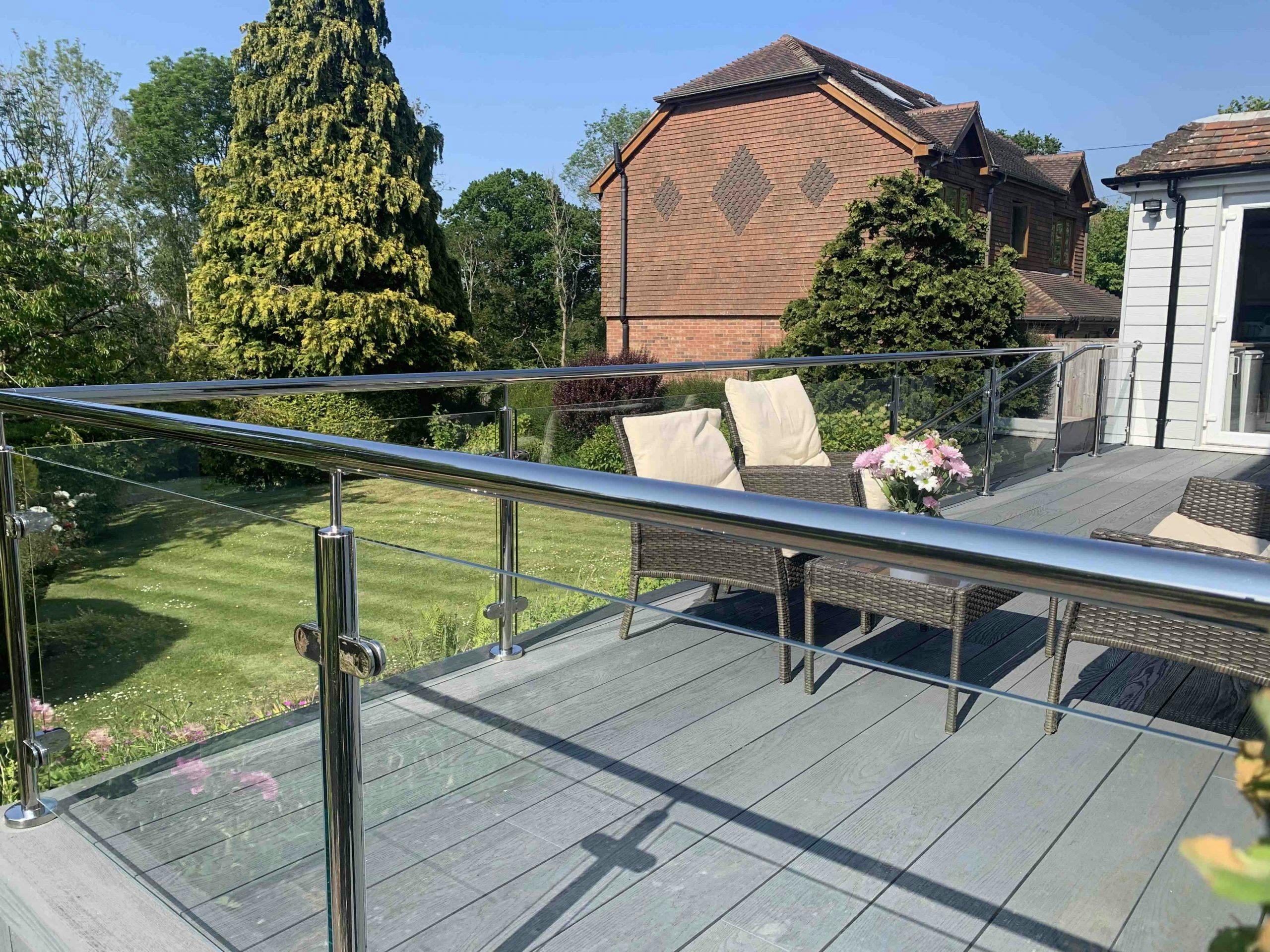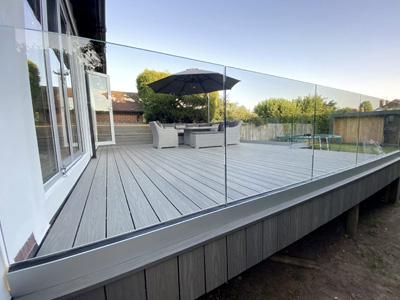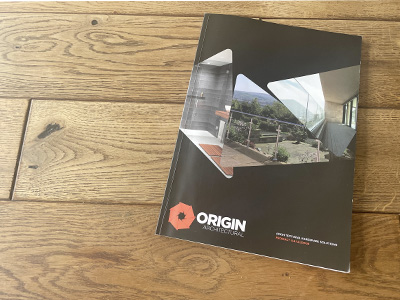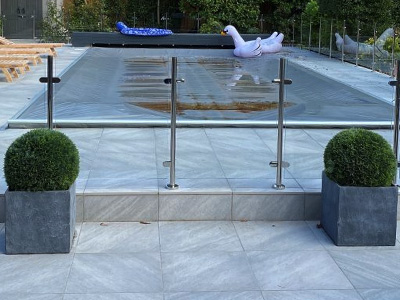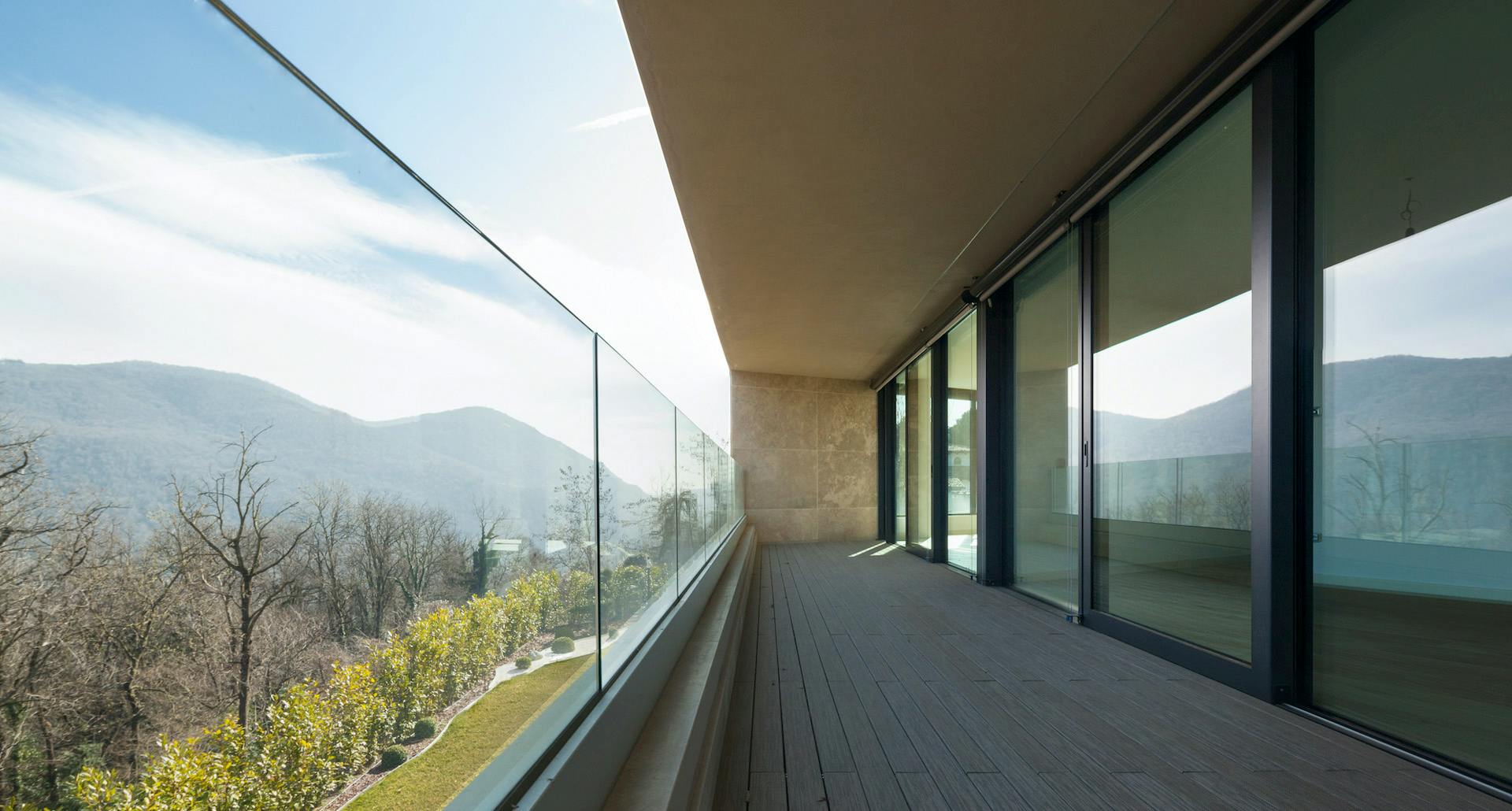Get An Instant Online Quote Now On Your Aluminium Balustrade System
Design Your Balustrade
Design your perfect Glass Balustrade today using our online Balustrade Designer and get an instant quote.
Request Your Catalogue
Download your free catalogue to help you choose the perfect balustrade solution for your project.
Aluminium Balustrade
What glass thickness do I need for an aluminium balustrade?
The glass thickness depends on the application. Most aluminium balustrades can take 12mm toughened glass to 21.5mm toughened laminated glass, the profile is still the same, but the clamp kit changes to suit the glass thickness. If this is for domestic use and being used at height (anything over 600mm ffl) you’d need to meet 0.74KN line load, this can be achieved with 17.5mm laminated glass or with 15mm toughened glass with a handrail.
If this is domestic use internally you can either use 12mm toughened glass with a handrail or use 13.5mm laminated glass with no handrail – both these options meet 0.36KN lineload.
Anything ground level or with a drop below 600mm you can use 12mm toughened glass.
Do I need a handrail with my frameless glass balustrade?
Our frameless aluminium balustrades are tested with and without a handrail so no you don’t always need a handrail with your balustrade. However, we do recommend a handrail in some applications. If you’re in a highly exposed area e.g. coastal we’d recommend adding a handrail for extra support.
Handrails aren’t for everyone, if you like the look of the frameless channel but want a little more support for the glass you can add glass stiffeners, these are H brackets that sit between the panels of glass helping with alignment and stability.
If your balustrade is at height building regulations state, the glass needs to be laminated or have a handrail so if you’ve got laminated glass and your balustrade meets the relevant line load you don’t need a handrail for building regulations.
Frequently Asked Questions
Our aluminium balustrades are super easy to install and don’t need a professional balustrade installer to install. A lot of our customers are DIY enthusiasts. We’d usually ask you to measure the centreline (where the channel will be sitting) or the external (outside edge of where the channel will sit). We can then wok everything out from this, channel can be cut to size here and glass will be manufactured based on the channel sizes- all you’d need to do is install the profiles and glass! To get a better understanding of the installation you can take a look at the installation videos on; https://www.originarchitectural.co.uk/tech-help/
Aluminium balustrades can be used in coastal areas as most of these systems have an anodised aluminium finish which is pretty much maintenance free as they don’t corrode and don’t stain which is ideal for coastal areas. Unlike stainless steel, the aluminium profile is pretty much maintenance free. The anodised finish on the profiles mean the aluminium is protected from build up and salt water making this the perfect solution for coastal and highly exposed areas. If you do decide to add a stainless-steel handrail and are costal we’d recommend having this in a chrome or powder coated finish. The aluminium channel can be powder coated to any RAL.
The two main reasons for using aluminium fixings such as aluminium channel rathe than stainless steel is that they require less maintenance and are more durable. All of our aluminium products are anodised. They subsequently do not require to be cleaned in the same way as stainless steel does. This is particularly so when near to saltwater of when next to a swimming pool. Our frameless aluminium balustrades can be found here: https://www.originarchitectural.co.uk/category/channel-systems/
All of our frameless aluminium balustrades are fully tested when fixed to steel or concrete. If your balustrade is protecting a fall of 600mm or more, then you should either have a laminate glass or a handrail. We can provide with test certification and demonstrate full compliance with Building Regulations.
Frameless balustrade is usually more expensive than stainless steel posts. The aluminium channel itself is a similar price as the stainless steel posts. It usually requires a thicker glass which subsequently makes it more expensive than stainless steel posts.
GOT A QUESTION?
Our experienced team are always happy help
Just fill in this contact form and we'll get back to you as soon as possible. Alternatively, you can call get in touch using the methods below:Read Our Recent Articles On Glass Balustrade
Balustrade Regulations UK: Important Regs to Understand
Balustrade Regulations UK: Important Regs to Understand Building regulations, no matter how strict, should always be followed to protect the users from any injury, and to keep your home or business...
How thick should the glass on a glass balustrade be?
How thick should the glass on a glass balustrade be? Are you looking to install a glass balustrade system but unsure what thickness of glass you need to use to ensure the system is safe and ...
Why are Glass Balustrades a Good Choice for Coastal Properties?
Juliet Balcony in North Allerton Origin Architectural supplied this amazing Juliet balcony in North Allerton. We recommended our frameless Skyforce system. This system uses laminated glass, so you ...
Balustrade Ideas & Inspiration
Some examples of aluminium balustrade installations by our customers






Balustrade Technical Support
Got a Question?
Our friendly and experienced UK customer service team are on hand to help and answer any questions you may have via phone or email.

